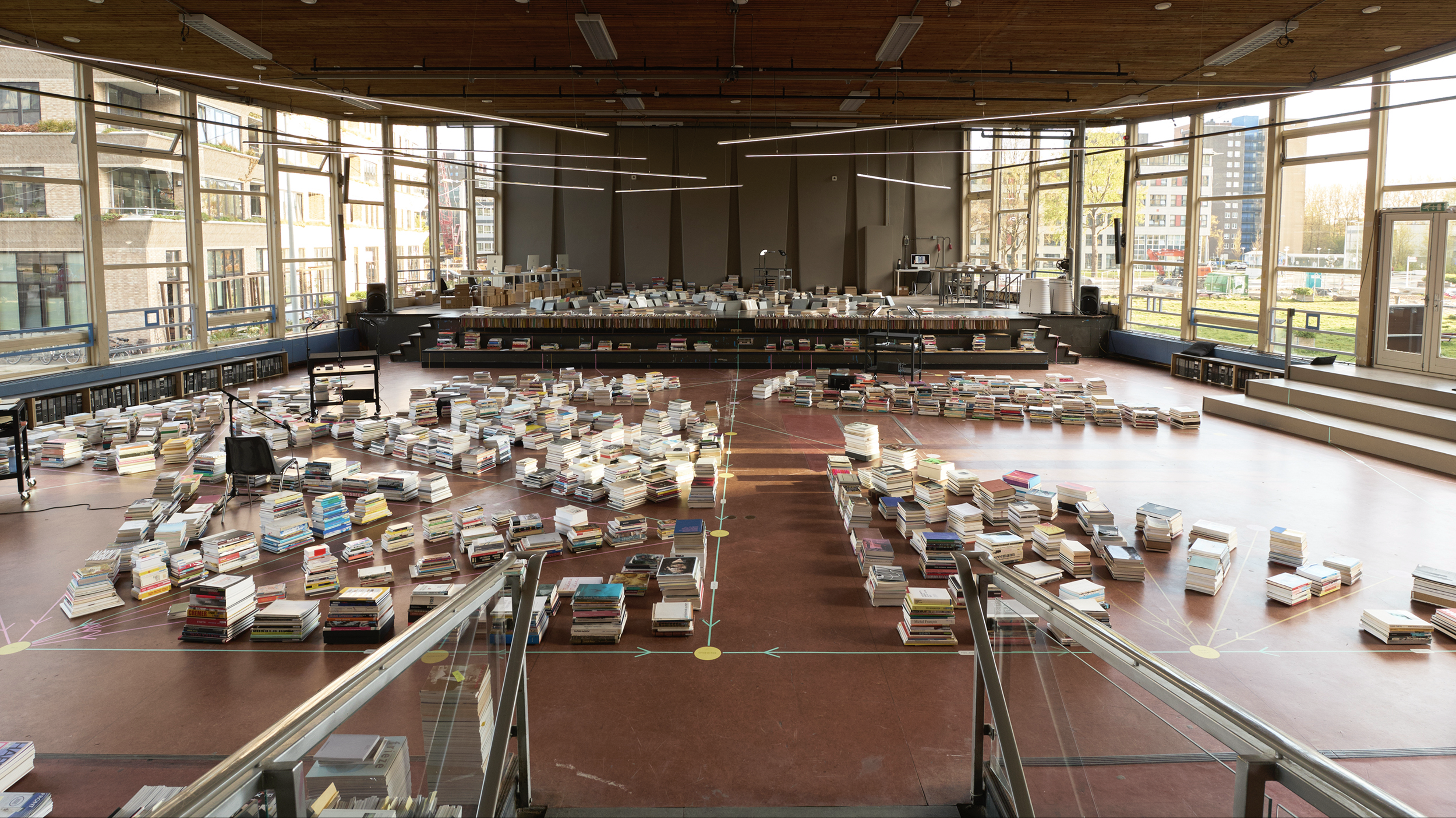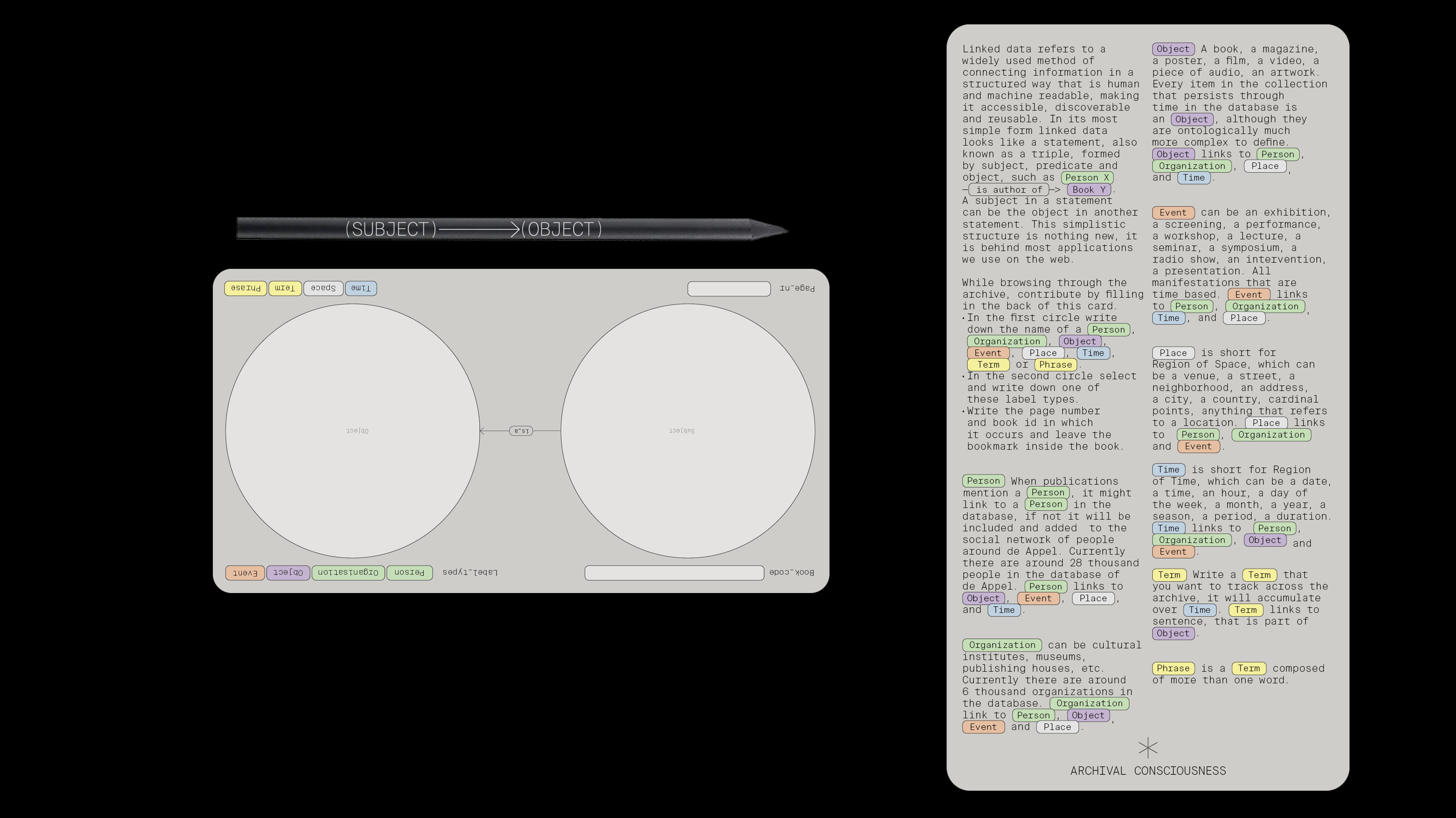

Entire digital collections are hidden behind a search box. The paradox of the search box is that while 'everything' is accessible, without knowing what is the scope of the collection it is hard to know what to search. This fact limits the experience of discovery, browsing, and learning. The search box mechanism also feeds into the common assumption that 'everything' is available online, which is far from true considering the collections of cultural libraries and archives.
How to read a Library the topics of digitization, access, visualization, discovery, the democratization of digital technologies, digital/data literacy, and community participation in the context of cultural archives and libraries. The practice-based research departs from the research questions: Can we use the physical library and its collection to imagine access to knowledge in the digital library? Can we use digital tools to allow readers to link data, share knowledge and collaborate within and across libraries? Can machine learning and AI be used in a library to enhance reading and promote access instead of being used for targeting advertisement and surveillance? Is it possible to make the library a digital public space? The research was concluded with the exhibition Catching up in the Archive in which the entire archive of de Appel was displayed. We produce a Mobile Archive Unit as a method to involve the community in the digitization process.

How to read a Library , was done in collaboration with Casa do Povo in São Paulo, and de Apel Archive, in Amsterdam. We worked closely with Nell Donkers, director and curator of de Appel Archive, and with main archivist Jacquine van Elsberg, Mohamad Dib, and the team of assistants and volunteers Judith de Bruyn, Matt Hickley, Artemis Christidi, Lynn Salentijn, Harald van Eck, Jan van Geem and many volunteers and many that work in the archive and the entire teal of de Appel during the exhibition with a focus on the work of the hosts that played a role of mediators between the public and the collection.
We started by working in the archive weekly, this allowed us to gain knowledge about the daily work of archivists, and to study the physical collection and its distribution in the space. The second phase of the research was dedicated to the database and the data accumulated over the last two decades. The database is separated from the website and both share parts of the data, website migrations over the years caused duplication of records. As part of the collaboration we had the opportunity to work with the data, field by field, and remove typos and duplicates. This is an often overlooked and necessary task involving not only technical skills but also domain-specific knowledge. It is important to stress that accessing the data within an institute is a challenge that requires the work of several people. The data accumulated over the years in databases are not easily available, it involves working with the database managers and IT professionals that are often not part of the team, but external companies.

De Appel was founded in 1975 as a knowledge center dedicated to performance art. The database of de Appel today has 18879 objects, 27760 people, 3086 institutes, and 1165 events. In How to Read a Library we proposed to visualize this body of knowledge departing from the publications, that connect with people and organizations, and events to reveal the vast underlying network that is formed around them.
The initial project at de Appel expanded beyond our expectations and became an exhibition displaying the entire archive at de Aula, at Broedplaats Lely in Amsterdam from the 7th of April to the 31st of May 2022. The exhibition attracted over 3000 visitors that came to see, navigate, browse, read and discover the archive.

The exhibition was also a way to accelerate the use of the Mobile Archive Unit as a way to aggregate data and translate the collection as data with the community. In 6 weeks we had the amount of public that would correspond to at least one year.
The Mobile Archive Units are special reading stations developed by Archival Consciousness. It is similar to a copy machine but when a page is captured it is published digitally allowing visitors of the website to see what is being read in the archive. These stations work as a bridge between the physical and the online Archive. Each unit is equipped with RFID (Radio Frequency Identification), a lightning system, a basic Android mobile phone, and a customized image-capturing application that, via RFID, can recognize a publication when it is placed on the table. The application doesn't capture images automatically, the reader decides when and which pages to capture. When a page is selected the reader is also asked to indicate which type of page it is. If it is a cover, a back cover, a table of context, a colophon, or a default page. It stresses the agency of the reader and that the process is not fully automated, the reader contributes to the making of the data.
The reader's presence is considered at every step of the process. The collaboration of the user enriches the data and therefore is considered labor. For this reason, the results of this process of making data belong to the commons by becoming a public good. The data generated through Biblio-graph doesn't belong to the institute or Archival Consciousness. We want to elaborate further on this aspect of the user as a co-owner as we continue.

The Mobile Archive Unit connects directly with Biblio-graph, a web application that displays images of the publications to form an overview of what is available in the archive. All visitors were invited to capture fragments of publications, which were linked to their source object in the database, creating a timeline of what is being read in the Archive. Selections of fragments by visitors continue to shape de Appel’s growing online collection, making it accessible anywhere to anyone with access to the internet ww.biblio-graph.org.



Central to the process of reading a collection is the data model, or schema, which we called in the proposal, the mapping carpet. The diagram covered the Aula’s floor outlining the semantic model for data aggregation that is behind Biblio-graph, creating an additional layer for browsing de Appel’s Archive online. The model printed on the floor also served as a framework for the circulation of visitors and books in the exhibition. By physically presenting the schema, we emphasized that the data model plays an important role when trying to read the collection, and in this particular case it shows that the logic governing both the physical and online Archive is open to debate.
On the other end of the schema which represents the architecture of the database, there is the data and how it enters the database as linked data. To share the process with the non-technical people, and to show that anyone can collaborate in turning the archive into data, we printed the Linked-data cards. The cards comprehensively break down what the method of linked data entails. The cards can be used to annotate materials in the physical library manually. The instructions on the card highlight that human intellectual labor, involved in manual annotation, is what animates the online machine.

